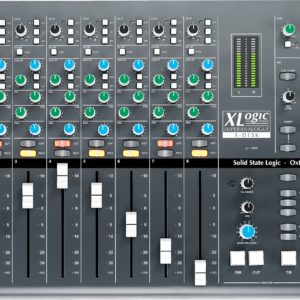Have you ever wondered what the ‘Set the same volume level for all tracks’ option in Spotify is really doing? No probably not, but I have. Googling didn’t help to find an answer to this question because some people say that it works by normalization and others say that it works by reducing the dynamic […]
AUDIO: DIY / Technical
Found 173 results
Have you ever wondered why there are so many different sample rates and why? The compact disc samples at 44.1kHz/16 bits. But then there’s these other rates like 48kHz, 88.2kHz, 96kHz, 176.4kHz, 192kHz. Wow, that’s a lot and the spacing doesn’t seem to make a lot of sense. How did we get to these numbers […]
Dynamics are defined as the difference between loud and soft. That the greater the dynamic range the greater the magnitude of differences between the loudest and softest. At least that’s the official definition. In reality, we rarely come close to using anywhere near what is possible. For example, the maximum dynamic range of a vinyl […]
The latest digital audio recording technology has helped an unsigned London-based band hook up with one of the world’s most famous producers in California – even though they were 5,500 miles apart. And it is helping recording artists and session musicians around the world collaborate remotely, saving time and money. Electric Litany weren’t expecting any […]
Have you heard of the phrase “chronological snobbery”? It was coined by the famous british author C.S. Lewis (of the popular Chronicles of Narnia series) and as he put it it referred to “the uncritical acceptance of the intellectual climate of our own age and the assumption that whatever has gone out of date is […]
” We currently use ReplayGain, which was the most recognized standard for calculating loudness when Spotify first started. In the future, we plan to use a new standard for calculating loudness, called ITU 1770 (from the International Telecommunication Union). This defines the integrated LUFS (Loudness Units Full Scale) measure, and it’s what we recommend you […]
PS AUDIO / Paul McGowan In just about every commercial recording studio in the world, (and most every recording you hear) the practice of EQ’ing is commonplace: correcting problems like unwanted background noise, microphone imbalances, and other anomalies that affect the clarity and quality of sound. Unfortunately, like ketchup, salt, pepper, and other condiments, it […]
Analogue Planet write …. The stylus rake angle is the angle the stylus’s “contact patch” makes to the record surface. If you have a relatively inexpensive cartridge with a spherical stylus you don’t have to worry about SRA because the contact area remains the same regardless of arm height. On the other hand, elliptical styli […]
Lost In Translation with Andrew Scheps provides an engaging, revelatory and humorous presentation of current audio format comparisons. The demonstration showcases the auditory differences of master recordings played back in different formats such as vinyl, CD, MP3, AAC and online streaming models. Scheps (http://www.uaudio.com/blog/artist-int…) has engineered and mixed for some of the biggest acts in […]
From VALVE Volume 2 Number 7 July 1995 Bill called a couple Saturdays ago to tell me that he had traded a Mac 1700 (a hybrid receiver, with tube tuner and solid-state amp) for a Scott 340 receiver. The person he traded with acknowledged a greater value for the Mac than the Scott and offered […]
I get asked this question all the time, and perhaps one more attempt at an explanation will help. Voltage is what determines loudness. Let me explain. Let’s imagine we have a stereo power amplifier delivering 10v at its output. Now, add two loudspeakers, each with identical sensitivity (meaning that for a given voltage, they will […]
PS AUDIO / Paul McGowan I think one of the very basic problems with people’s opinions on class D amps is the hierarchy of labeling – I mean, as a child if you get an “A” in school you’re pretty happy; get a “D” or an “F” and you’ll probably be having a conversation with […]
Paul McGowan writes … In my mind, there’s no question that between components the best connection is balanced. Balanced cables offer lower noise and better sound. I understand there are single-ended holdouts (wait, we disagree on something in audio?). Perhaps their equipment doesn’t support balanced. Perhaps their cable collection doesn’t include balanced. Or maybe they […]
John Siau writes: As an engineer I like to use “rules of thumb” to make quick estimates that help explain what can be expected from the physical world around me. These rules of thumb are easy-to-remember approximations that eliminate the need for complicated and needlessly precise calculations. If you learn a few key rules of […]
John Siau writes: We have frequently used Steely Dan’s Gaslighting Abbie from Two Against Nature in our listening tests. This is a spectacular CD recording with lots of dynamics and a low noise floor. Nevertheless, in a little over 5 minutes, this track has 559 intersample overs on the left track and 570 on the right track for a total […]
Q: Hello Colin. The unit in question is a Lafayette 4 channel decoder. When turning off my system, there is a popping noise from the rear speakers unless I turn the volume down on the decoder first (I’m only using the rear outputs). I’d like to eliminate the problem. I’ve searched bypass capacitor and coupling […]
John Siau writes: Distortion measurements (THD, THD+N and IMD) are traditionally expressed in terms of percent. But what do 1%, 0.1%, 0.01% or 0.001% mean in terms of loudness or audibility? If you are like most people you just know that 0.001% is the best of the three numbers listed above. If you are a well-trained […]
Hi Colin, Pls can you help me? Can I safely run a USA spec amp designed for 110v 60Hz in the UK on 240v 50Hz, with a step down transformer (but it will still be 50Hz). So many conflicting views across the web. I think a lot of people believe it can work ok the […]
PS AUDIO / Paul McGowan There are tons of misconceptions and even a few audio myths growing around the subject, so I think he’s right. Today we will start with a simple overview, then dig in a bit deeper in the days to follow. Creating a seamless streaming music experience requires a well-designed system comprising […]
Dear Colin, Generally speaking, what is it that causes output transistors to blow? Do they tend to die a natural death? Bad drivers? Emitters? Problems with the rectifier circuit? Assuming there wasn’t shorted speaker wires or excessive moisture. The amp bias and the +/-77 voltage was fine before they blew. It happened on power up. […]
Paul McGowan writes: Audio equipment used to be hand wired in a process known as point to point wiring, but now most everything is without wires using thin strips of copper clad to fiberglass instead. What’s better, point-to-point or PC boards when it comes to sound quality? Watch Now
CIRMMT Distinguished Lectures in the Science and Technology of Music Floyd Toole, consultant to Harman International, USA
PAUL McGOWAN: A recent post covered output transformers on tube power amplifiers and why they were needed. It also covered the fact that IMHO transformers are the last thing I would add to the output stage of a solid state power amplifier because output transformers like this contribute so much to the sound quality of […]
Hello Howard. Can you ask Colin please what is star earthing and does he / will he using it in his new designs? Ta muchly J.N Peterson {Colin} Dear J.N.Peterson star earthing should be used in all analog designs, that is a single zero or earth for every component on the circuit board and normally […]










